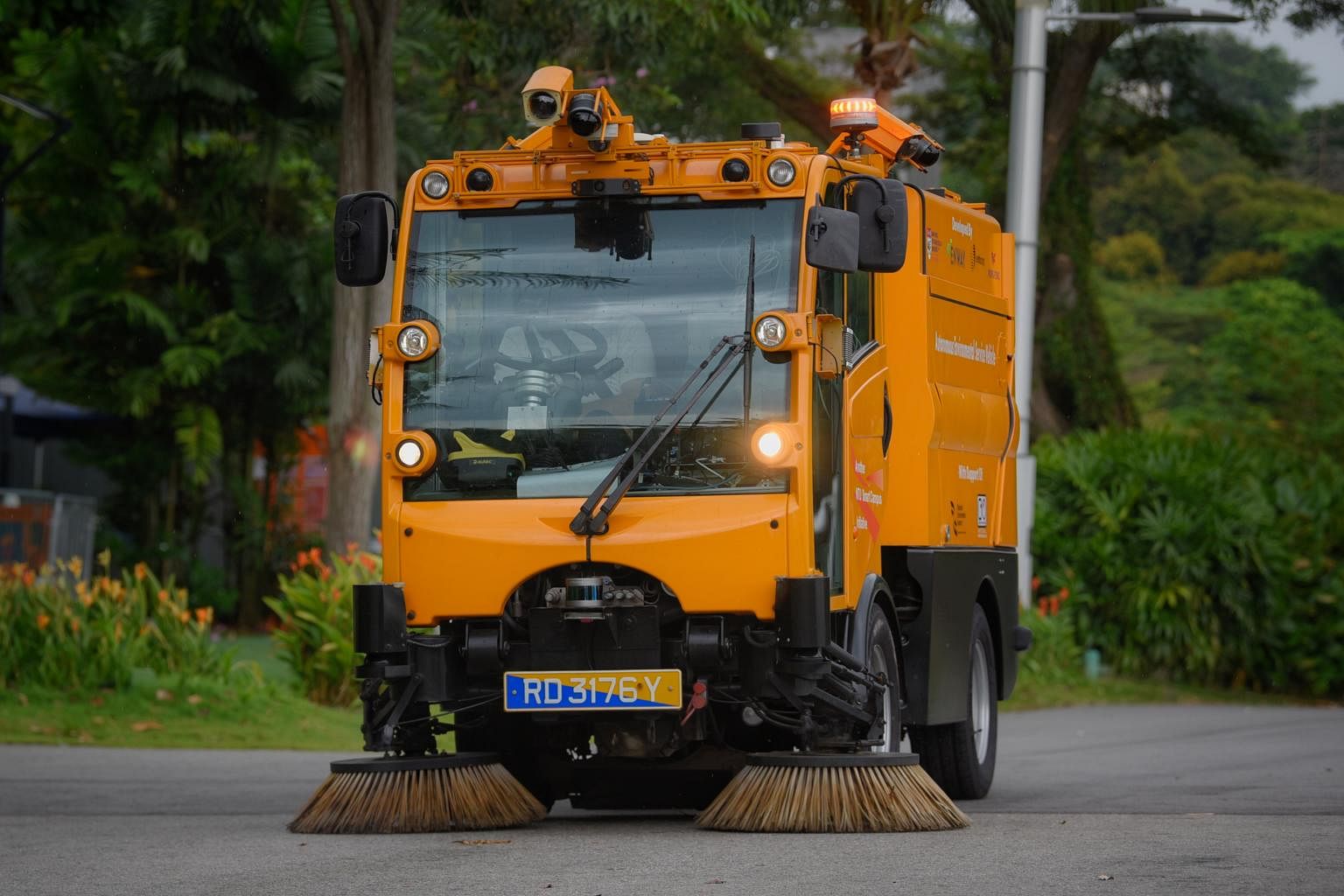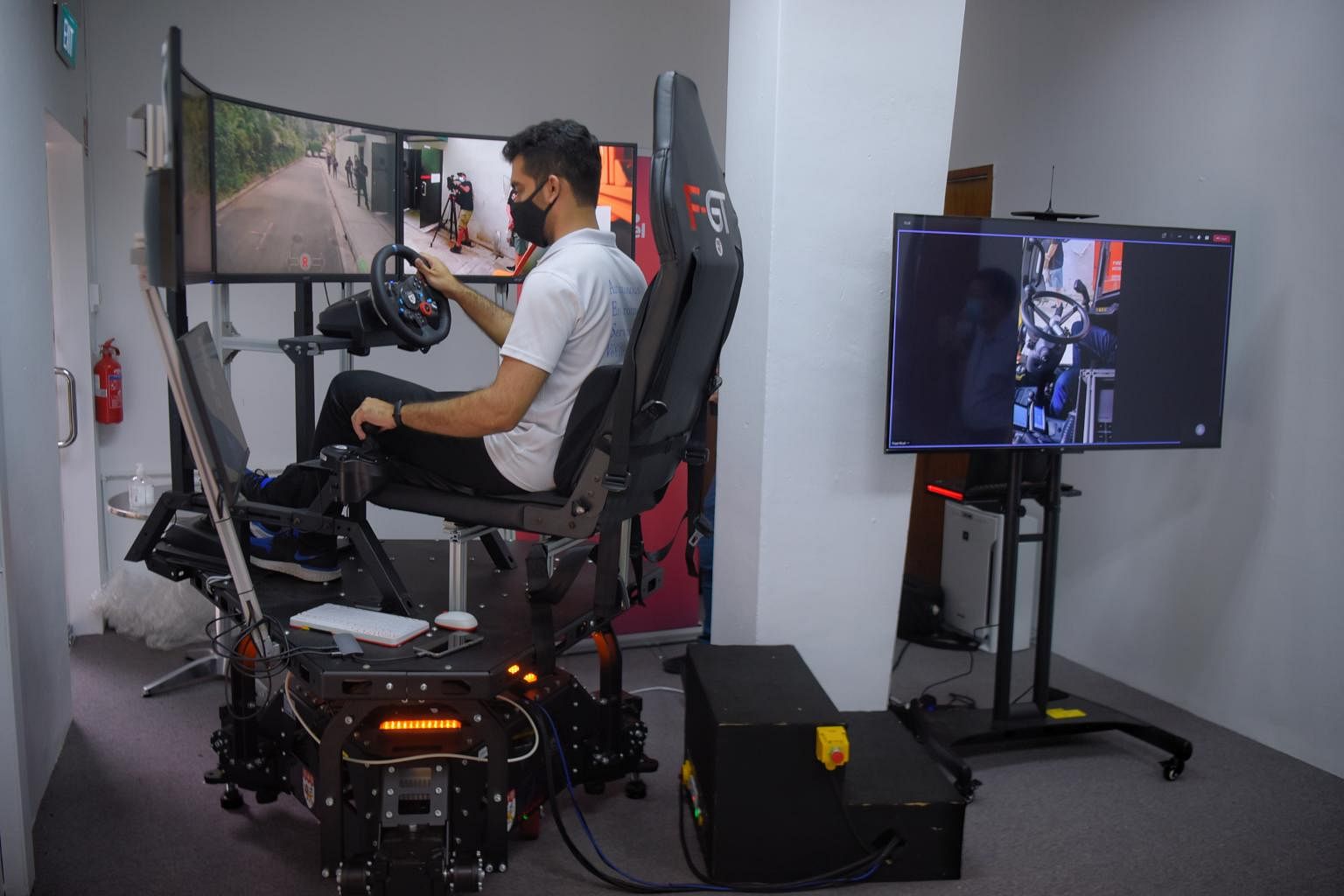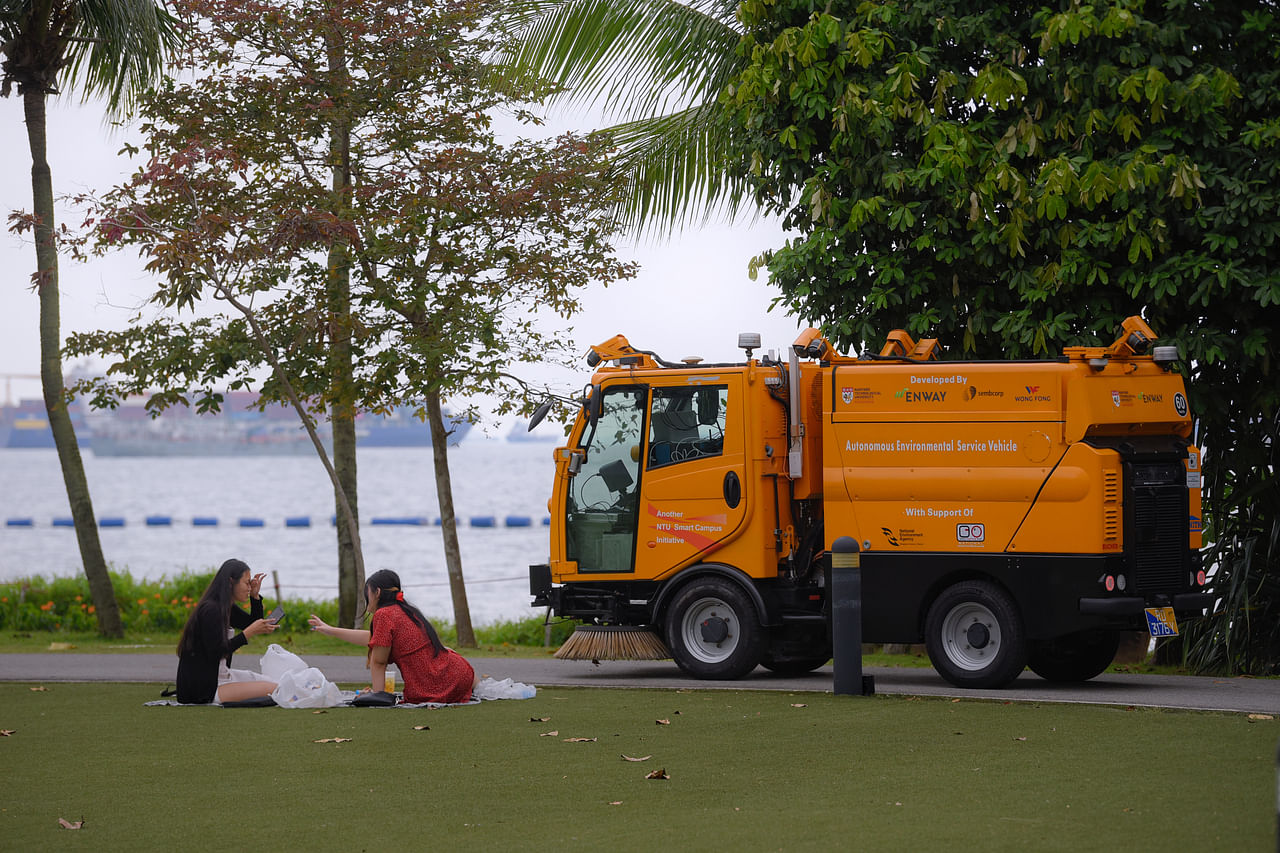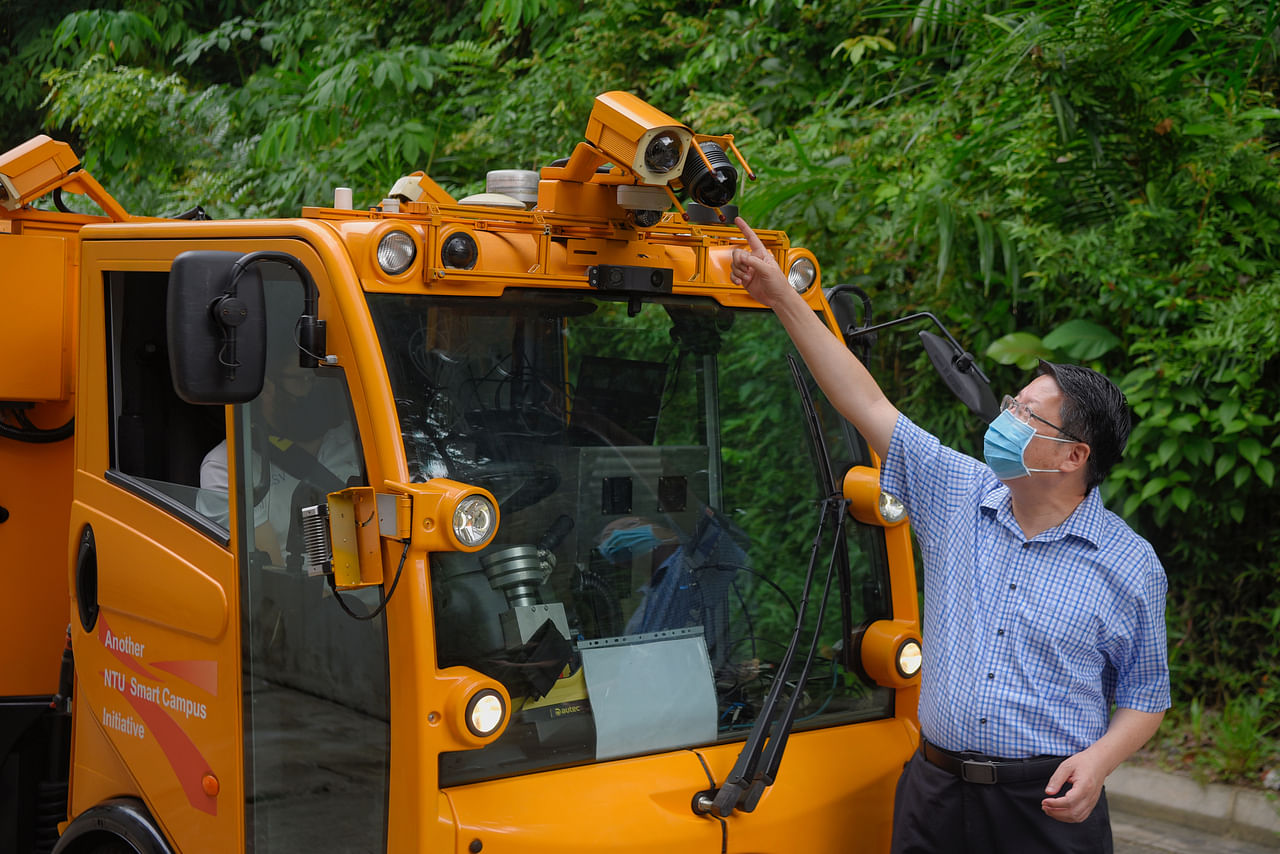SINGAPORE - A driverless roadsweeper vehicle in Sentosa that can be remotely controlled, in case of an emergency, by an operator located about 20km away in Jurong West is one of the new applications tapping 5G mobile networks that the Government is testing in the resort island.
It is among the first set of 5G public sector trials in Sentosa announced on Tuesday (Oct 19) by Minister for Communications and Information Josephine Teo.
This 5G @ Sentosa project is led by the Government Technology Agency (GovTech), Sentosa Development Corporation and telco Singtel.
"As part of our continuing efforts to pioneer bold ideas, we have transformed Sentosa, itself an innovative resort island, into a 5G test bed for the public sector," said Mrs Teo virtually at the Mobile 360 Asia Pacific Conference.
The trials are to allow government agencies to track the capabilities of 5G for various smart nation applications with the goal of rolling them out on the mainland in the next five years.
Some applications could offer manpower savings, improve safety at worksites and deliver services to people more easily.
"5G... provides a superior connectivity channel to handle large amounts of data in real time without compromising the quality of the data transmitted," said Mr Lim Chinn Hwa, GovTech's senior director for smart nation platform solutions, at a media briefing.
A 5G network is said to be 10 times faster than 4G and has more bandwidth, which means more devices can be connected to it.
5G has lower latency than 4G, meaning response times on 5G can be two times faster, according to Singtel, so high-resolution videos can be streamed in real time with almost no lag compared with 4G.
So far, 10 trials are under way in Sentosa, with most having started in August. The Government aims to have 15 trials by public agencies by the end of the year, and at least 30 by the first half of 2023.
The Infocomm Media Development Authority (IMDA) will be working with Singtel to identify companies that can offer potential 5G solutions for government agencies to support the Sentosa trials.
On choosing Sentosa for the tests, Mr Lim said the island is a "microcosm of Singapore and provides a defined environment for government agencies to study and trial (5G) use cases proficiently".
Sentosa is almost entirely covered by Singtel's 5G network for the trials except for a few areas where tests are currently not being done.

Singtel, StarHub and M1 have started rolling out 5G networks with about 50 per cent coverage across the country now. Nationwide coverage is expected by 2025.
The remote-controlled roadsweeper tests, conducted by the National Environment Agency and Nanyang Technological University (NTU), could help pave the way for several vehicles to be deployed with just one remote operator as the safety emergency driver for all. This could help save on manpower.
The sweeper can send video feed to the operator located at NTU, for instance, so they can see in real time what is in front of the vehicle when taking over control.
Professor Wang Danwei from NTU's School of Electrical and Electronic Engineering said that this can be done almost instantly with 5G but not with 4G.


While there is some long-range Wi-Fi that can be as good as 5G, it requires equipment to be set up in specific locations and, even then, the distance it covers is more limited than 5G.

Prof Wang said 5G is "more convenient for teleoperations and provides very large bandwidth".
Safeguards have been put in place for the tests, such as having a safety driver physically in the vehicle and a road marshal who can advise the public to stay clear.
The various Sentosa trials will not be done during weekends and peak hours when there are more visitors.
Some trials like those involving aerial drones sending videos over 5G for worksite inspections are in areas that are closed off to the public.
One 5G application tested by Nanyang Polytechnic and GovTech could benefit consumers. It involves digital signboards that allow people to browse products and buy them directly from these kiosks.
Consumers could also be able to "try on" virtual clothes on themselves, using the signboard as a mirror.
One problem with using Wi-Fi and 4G in such retail kiosks is that they present cyber-security risks. 5G has data-protection mechanisms making purchases made over it more secure.
The Government's 5G tests in Sentosa complement 5G trials done by the private sector.
IMDA announced on Tuesday that besides Sentosa, three other test beds for 5G applications will now be opened to all businesses. All four were previously limited to selected private sector partners.
The three test beds are: the Maritime and Port Authority of Singapore's Maritime Drone Estate in Marina South, CapitaLand's Smart Urban Co-Innovation Lab in Singapore Science Park, and IMDA's Pixel facility in one-north.
Some companies have already expressed interest in conducting 5G tests in these areas.
German start-up Volocopter is planning to test the connectivity of its air taxi aircraft during flight at the drone estate, while robot developer Weston Robot is keen to test remotely controlling robots in CapitaLand's lab.
Over at Pixel, media tech firm Hiverlab, a company that benefited from testing 5G there, is now planning to commercialise its 5G solutions.
They include creating digital replicas of warehouses that come with real-time data from the machines on site. Workers can do checks on the replicas, such as on equipment status, through 5G without being physically present.

